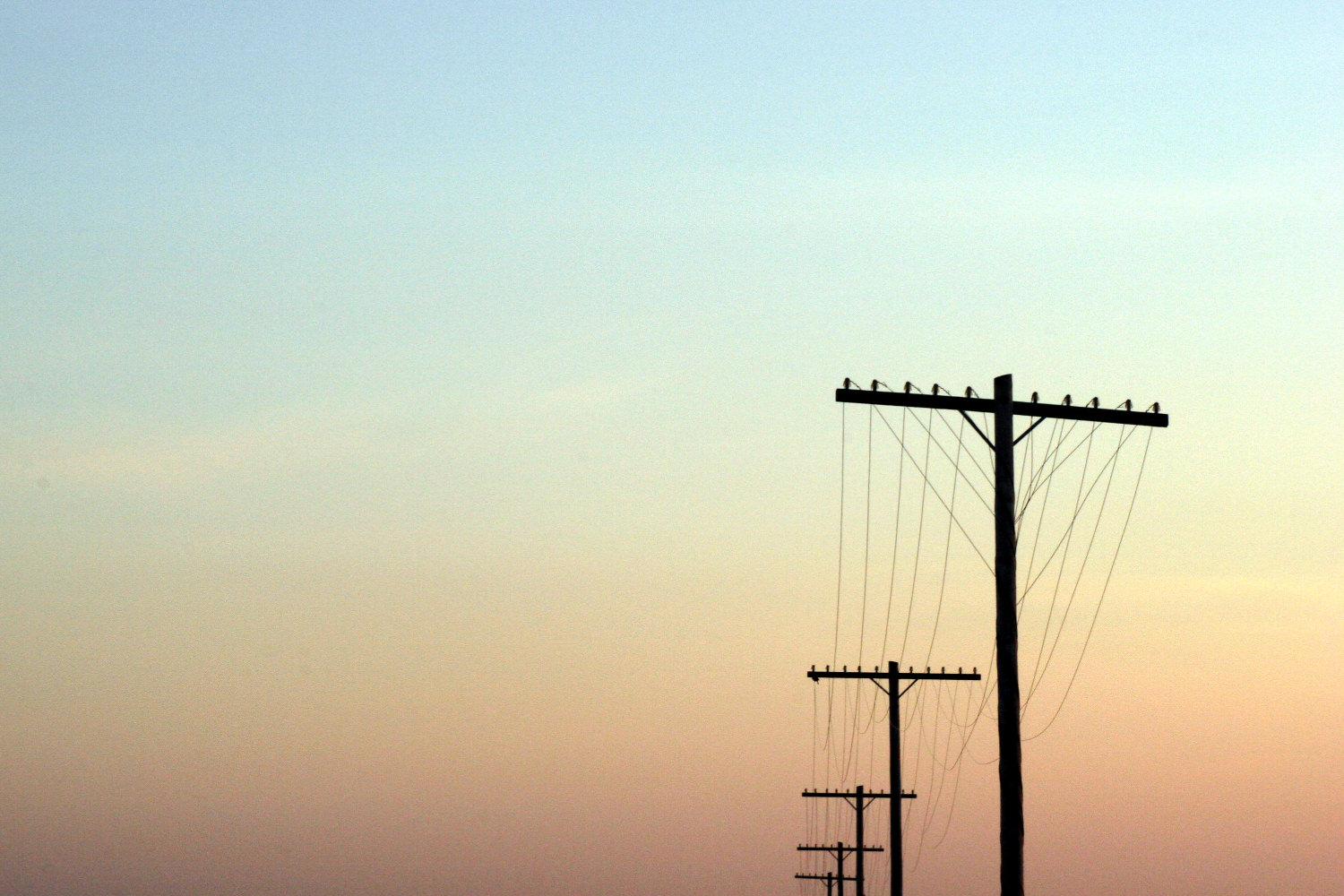Negative space, sometimes referred to as white space, is a concept that's been used in art, design, architecture, and sculpture for hundreds of years. It's equally useful in photography, and can be used to turn an average photo into an outstanding one.
Unfortunately it's something that's understood by relatively few people, but with a little bit of practice it can help you look at your photos in a new way, transforming your compositions and producing truly breathtaking results.
What is Negative Space?
Put simply, negative space is the area which surrounds the main subject in your photo (the main subject is known as the "positive space"). This definition is rather abstract, so take the following example; the power lines in this image form the positive space while the sky is the negative space.
The sky in this photo forms the negative space around the main subject. Image by Lee.
Negative space defines and emphasises the main subject of a photo, drawing your eye to it. It provides "breathing room", giving your eyes somewhere to rest and preventing your image from appearing too cluttered with "stuff". All of this adds up to a more engaging composition.
Negative space provides breathing room and draws your eye to the main subject. Image by Ruben Alexander.
When used properly, negative space provides a natural balance against the positive space in a scene. Getting this balance right is tricky and rather subjective, but it's something you'll get better at with time and practice.
How to Use Negative Space in Your Photography
Our brains are full of preconceived ideas about the way objects look, in terms of their size, shape, colour, texture, and so on. Unfortunately these preconceptions distort the way we view a scene, and this can lead to photos which look good in our mind but not so good in reality.
The key to overcoming these problems is to ignore the objects in the scene altogether and instead concentrate on the gaps between and around them. This forces you to pay more attention to your composition, and helps you see shapes and sizes more accurately.
Focus on the spaces between objects to balance them more effectively. Image by Joost J Bakker.
When framing your photo, adjust your composition until the positive and negative spaces in the shot feel well balanced against one another. Be generous with the amount of empty space you leave, and don't feel you have to cram something interesting into every square inch of the frame.
Something I love to do from time to time is go through my old pictures in Photoshop or Lightroom, experimenting with different crops to see how they affect the overall feel of the shot. This is a great way to learn how to use negative space, and it's amazing how a small change in composition can make a big difference to the effectiveness of a photo.
Experiment with different compositions to see how they affect the feel of the photo. Image by Extra Medium.
Mastering the use of negative space takes time. We're so used to focusing on the main subject in a scene that it can seem strange to treat it almost as an afterthought. However, doing so will make you consider each element in your scene more carefully, leading to much stronger compositions.
